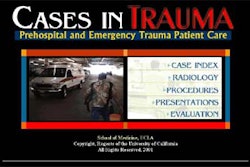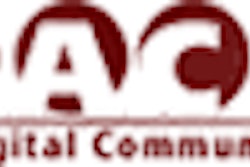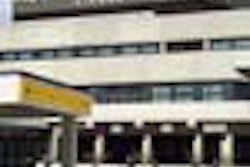AuntMinnie.com is pleased to present Part II of a two-part series on the transition to radiology practice contributed by Drs. Douglas P. Beall and C. Darren Duvall. This article addresses the intermediary path from residency to practice.
Intellectual property
As a radiology resident for the last four years, you have doubtless become comfortable with the ways in which exams are performed at your hospital. Your interpretation patterns have been shaped by the protocols and methods used there, and the experiences form a kind of psychological security you can take with you to your eventual practice site.
As for tangible practice patterns, it's far easier to obtain standard forms, preprinted orders, and protocol sheets before you leave than to construct them from scratch once you realize you need them. These documents should also be stored in your organized filing system.
Obviously, a certain amount of tact, political finesse, and direct permission are needed before copying protocols with the express intent of taking them to another institution. Naturally there will be standard protocols and set ways of doing business wherever you go (especially if you are a fellow and are supposed to be learning).
Nevertheless, a certain degree of flexibility is accorded to all new staff-level physicians, and you should use it to make yourself comfortable. Moreover, as a recently trained radiologist, you're expected to bring new techniques and improved protocols that reflect some of the advancements of the modern practice of radiology and its subspecialties.
Forms to create or appropriate include:
- CT protocols (slice thickness, contrast rates and timings, window/level, kVp/mAs, pitch, etc.)
- MRI protocols (type of sequence, TR, TE, FOV, matrix, NEX, bandwidth, flip angle, type of contrast, etc.)
- Interventional protocols (contrast rates and dosages, imaging planes and rates)
- Nuclear medicine protocols (dosages and agents; imaging protocols: seconds for each image, window settings, etc.)
- Preprinted orders (post-catheterization, post-biopsy, etc.)
- Consent forms (for ideas, your new site likely has its own)
- Printing protocols for CT and MRI
- Standard negative dictations
- Report forms for specific modalities
- Staff and technologist phone lists
Most experienced MRI and CT technologists can take a printed study from your training site and do their best to duplicate it in terms of pulse sequence, slice thickness, and order of printing. This is particularly helpful if you are introducing an innovative technique or a modality upgrade to your new practice.
If you plan to do interventional procedures, try to document the manufacturer and model number of every catheter, wire, and other device for which you have affection. Nothing is worse than getting some strange device handed to you during your first procedure at a new place. When beginning in a new practice, it is surprising how much confidence something as prosaic as a familiar biopsy gun or catheter will provide.
An additional and vital piece of information, particularly if you are introducing a new procedure at your practice site, is a CPT code list. Do not bring a list of charges to your new practice. The new practice must set its own charges and, by attempting to incorporate the charges from another practice verbatim, could run afoul of antitrust law. This happens more often than you might imagine, especially if you're heading to a hospital that's smaller than your tertiary-care training site. The CPT code will aid your billing department in defining and appropriately charging any new procedures.
General housekeeping
Before you leave your program (and before you switch insurance), get a complete physical, a letter including the date on which the exam was performed, and a statement that you have no physical or mental impairments that will prevent you from practicing in a safe manner. If your residency program offers discounted prescriptions, fill them before you leave.
If you have moonlighting malpractice insurance, be sure to buy out the tail and keep this document. Your new malpractice insurance company will want it, and many hospital staff applications will have a list of malpractice insurance policies you have had in the past, including dates.
If you've had the misfortune of being involved in a malpractice case that has not closed, get the name and number of your hospital counsel, and be sure they know where you are headed. For closed cases, you will likely need a brief listing of the circumstances and disposition of any cases you have been named in. These are all going to be in the National Practitioners Data Bank report the medical staff at your new practice site will order, and an explanation will be required. If you are under the care of a physician for any problem, have a letter available that explains your condition and its implications for your practice, if any.
If you have privileges at other hospitals for moonlighting, keep a list of the addresses of these places and the phone number of the medical staff offices. Send them a letter requesting that you be placed on inactive status. If they require you to resign, be sure they send you a letter stating that you resigned in good standing and without quality or patient-relation issues. Keep this letter with you.
Contact the state medical licensing boards at all of the states where you hold licenses, and inform them of your new address and practice location. Some of these boards may also offer the option of converting your license to an inactive status. The inactive status will not allow you to practice in that state, but will allow you to keep your state license at a reduced annual fee.
Reactivating an inactive license is much easier than re-applying for a new license, and this option should be considered if you have any inclination of returning to a particular state to practice, or intend to read any teleradiology images there.
If you have letters of recommendation or evaluation forms that need to be completed by staff at your training program, be sure that those individuals complete the requested task. Failure to obtain letters of reference will cause undue delays in your credentialing and will cause the medical staff in charge of the credentialing process more work, as their oversight of your credentials confirmation will be prolonged.
Staying informed and current on the status of the credentailing process at your future site can prevent unnecessary delays. Also, politely asking the staff to finish your letters and forms before you leave is much more effective than trying to handle such matters after your departure.
Give your program director, department director, and educational assistant a token of your gratitude and affection. These individuals will have to help you in the future and have provided valuable assistance in the past, so try to leave on the best terms possible.
Conclusion
Your actions taken in the final weeks of your residency can make your future life substantially less stressful, particularly if you're moving a significant distance away from your training site. The lack of critical documentation means long-distance phone calls, registered mail, delays in privileging, and possibly in payment.
Finally, it's important to remember that matters that are immediately vital to you now are of secondary importance to people at your program, because their time is being occupied by other concerns directly related to their present trainees. Both private practice and academic radiology can be personally and professionally rewarding, and with strategically coordinated efforts properly placed, you can quickly get down to the enjoyable business of radiology practice.
By Douglas P. Beall and C. Darren Duvall
AuntMinnie.com contributing writers
June 15, 2001
Related Reading
Life after residency: Making the transition to practice, June 14, 2001
Dr. Douglas P. Beall is a fellow in the department of radiology, division of musculoskeletal imaging at the Mayo Clinic in Rochester, MN. He also served as the division chief of interventional procedures at the Sheppard Air Force Base in Texas. Dr. Beall is the author of Program Requirements for Residency Education in Diagnostic Radiology and several publications in AuntMinnie.com’s Residents Digital Community.
Dr. C. Darren Duvall is a general radiologist and a partner in Radiology Consultants, PA, a private practice in Paris, TX. He is a graduate of Texas A&M University Health Science Center College of Medicine in College Station, TX, and completed his residency training at Scott and White Medical Center in Temple, TX. Dr. Duvall is a past president of the American Medical Association's Resident Physician Section.
Dr. Beall will host a live Web chat on "How to Get a Job" on AuntMinnie.com’s Residents Digital Community Discussion Group on Friday June 29 from 3-5 p.m. (CT).
Click here to post your comments about this story in our Residents Digital Community. Please include the headline of the article in your message.
Copyright © 2001 AuntMinnie.com



















